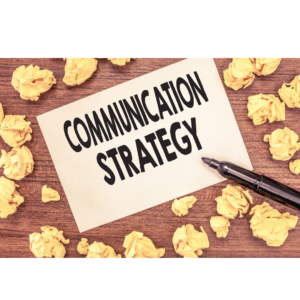Body language- is the use of nonverbal communication through physical behaviour, expressions, and mannerisms. Nonverbal communication can help people relax, create trust, and connect with others. They can, however, perplex others, cause stress, and even create an unpleasant workplace. Understanding one’s body language has always piqued my curiosity because I’ve been in circumstances when, despite what someone says, their body language communicates something completely different, or vice versa. Nonverbal communication can influence our words by reinforcing our message, contradicting our words, reinforcing our statement, substituting the meaning of what we’re attempting to express, and complementing what we’re trying to say. Body language is usually spontaneous rather than conscious, and it comes naturally to most people.
We express ourselves in a variety of ways as humans, including verbal, vocal (which pertains to tone, tempo, and intonation), and nonverbal. Sarcasm, rage, tenderness, confidence, fear, and other nonverbal emotions can be conveyed through the tone of one’s voice. Nonverbal communication accounts for the vast majority of our communication.
How to Use LinkedIn
Here are a few examples of nonverbal communication:

1.Facial expressions are the first thing that comes to mind while thinking about facial expressions.
Surprise, pleasure, anger, fear, sadness, and disgust are six universal expressions in which people utilise facial features to convey basic emotions. Individuals can notice facial expressions, which helps them assess the situation, hence they play an important role in dialogues.
Active Listening Skills, Examples and Exercises
2.Movement and posture of the body
Sitting, walking, standing, bearing, stance, and even slight movements are all part of your body movement and posture.
3.Gestures
Waving, pointing, and even using hands while speaking are examples of gestures. Personally, I frequently use my hands to communicate, especially when discussing things about which I am quite enthusiastic. It helps me process and articulate my thoughts more efficiently, which helps me get my views through. When I converse with my hands, I can think more clearly from my thoughts, and my hands can sometimes assist me get my message through more effectively than my vocal features.
4.Eye to eye contact

Because you can see a lot via one’s eyes, including honesty, anger, attractiveness, and affection, the visual sense is an important type of nonverbal communication. Eye contact is particularly important for keeping discussions going because it can reflect a person’s empathy, concern, and even how interested they are in the subject.
Because everyone needs to take preventive precautions, such as wearing masks and social separation, to keep safe and mitigate the spread of COVID-19, the pandemic has made it more difficult to communicate through nonverbal actions. Meetings, conferences, and educational activities have all been relocated to apps like Zoom, Microsoft Teams, and others, resulting in a major increase in the use of videoconferencing in both business and personal lives.
Masks have also hampered our capacity to interpret emotions and communicate, as the eyes and mouth are the two key organs that aid in reading others’ faces. Despite the fact that the mouth is covered, there are certain techniques to improve communication while being safe and using face masks.
1.During interpersonal communication, using and identifying the upper face through the eyebrows, eyes, and upper cheeks.
2.When communicating, use your entire body, including gestures and body movements.
3.Practicing active listening and facing the person with whom you are chatting directly to pay more attention.
4.For human encounters, we’re relying increasingly on videoconferencing.
Because of the pandemic, the use of videoconferencing has skyrocketed; yet, it is not without its drawbacks! However, there are a variety of techniques to maintain healthy body language while communicating online, including:
1.Straightening our posture
2.Leaving space for ideas to be expressed through the use of our hands and upper body movements.
3.Attaining and keeping eye contact at all times!
4.The ability to perceive and use facial traits to express oneself.
5.Using vocals to express various emotions!
To summarise, body language is important in all forms of communication because it can help people break down boundaries and create stronger bonds with others. Due to the nature of the epidemic, there have been some restrictions on human contact; however, as mentioned above, there are ways to overcome these obstacles while remaining safe!
In the job, body language is important.

In the workplace, body language can convey a range of meanings. Both in private and in public, you communicate through your body language. You almost definitely use body language every time you have a conversation with a coworker, attend a meeting, or introduce yourself to a customer.
During the course of a workday, body language can convey a variety of messages. Body language, for example, reflects a person’s level of interest or concentration. You have someone’s entire attention if they make eye contact with you, nod as you speak, or lean toward you while you’re talking. Someone may be bored or preoccupied if they are leaning back in their chair, gazing away from you, or fumbling their fingers. If you need to measure how a person or a team responds to your ideas or proposals, observing and interpreting these messages might help.
Body language in the workplace has an impact on the productivity and relationships of the entire team. You improve your skills as a professional communicator if you can effectively interpret body language. It’s vital to remember certain fundamental truths about body language as you attempt to improve your comprehension of it in the workplace.
First and foremost, deciphering body language requires an understanding of context. Depending on the person and the situation, certain actions might indicate quite different things. Crossed arms might indicate dissatisfaction or discomfort. They can, however, convey confidence or a laid-back attitude in some people. The more you know about your boss, coworkers, or clientele, the easier it will be to understand their body language.
Understanding body language in the workplace gives you the ability to decipher signals that aren’t spoken aloud. Nonverbal messages can either support or contradict what someone says verbally. “I absolutely agree with you,” a coworker might respond, discreetly shaking their head. While leaning forward in their chair, a client might say, “I’m very not interested.” These conflicting messages can be insignificant at times, but they can also provide you with crucial insight into what another person is thinking.
Good use of body language
There are various methods to use body language in the workplace to your advantage. Others’ reactions to you can be influenced by your body language. It can also influence how others view you and your motives. Being conscious of your own body language can have an impact on your productivity and reputation at work. Body language has the ability to increase an individual’s honesty, conflict resolution, and teamwork. You can increase your value to your company and coworkers by improving your ability to read and interpret body language.
